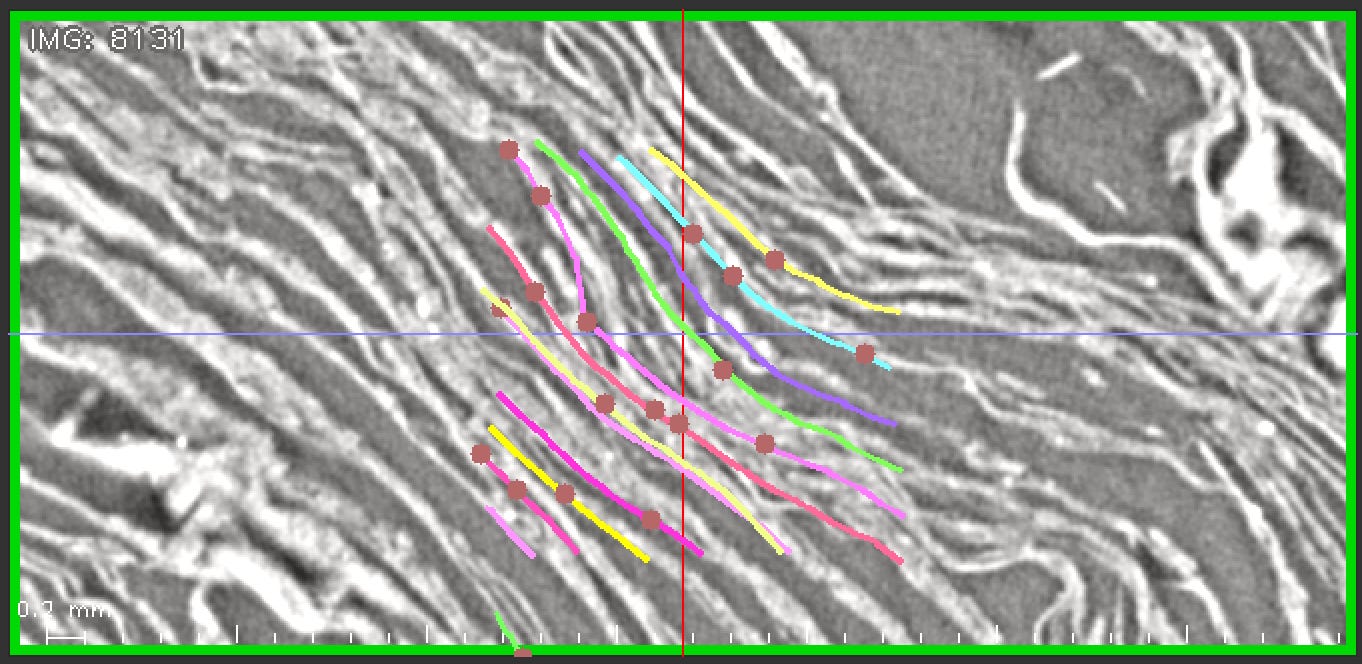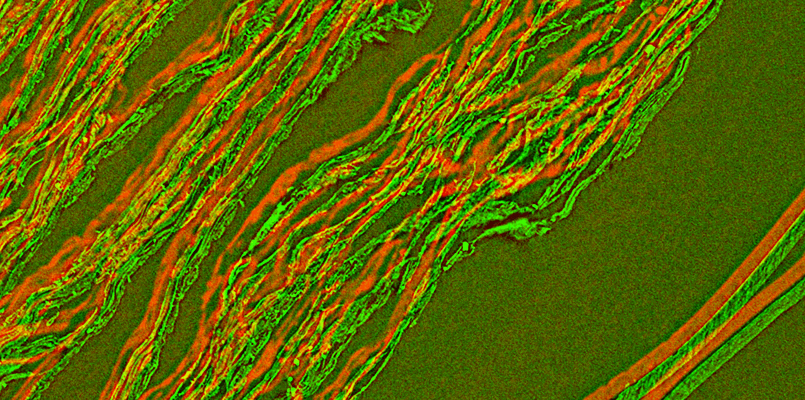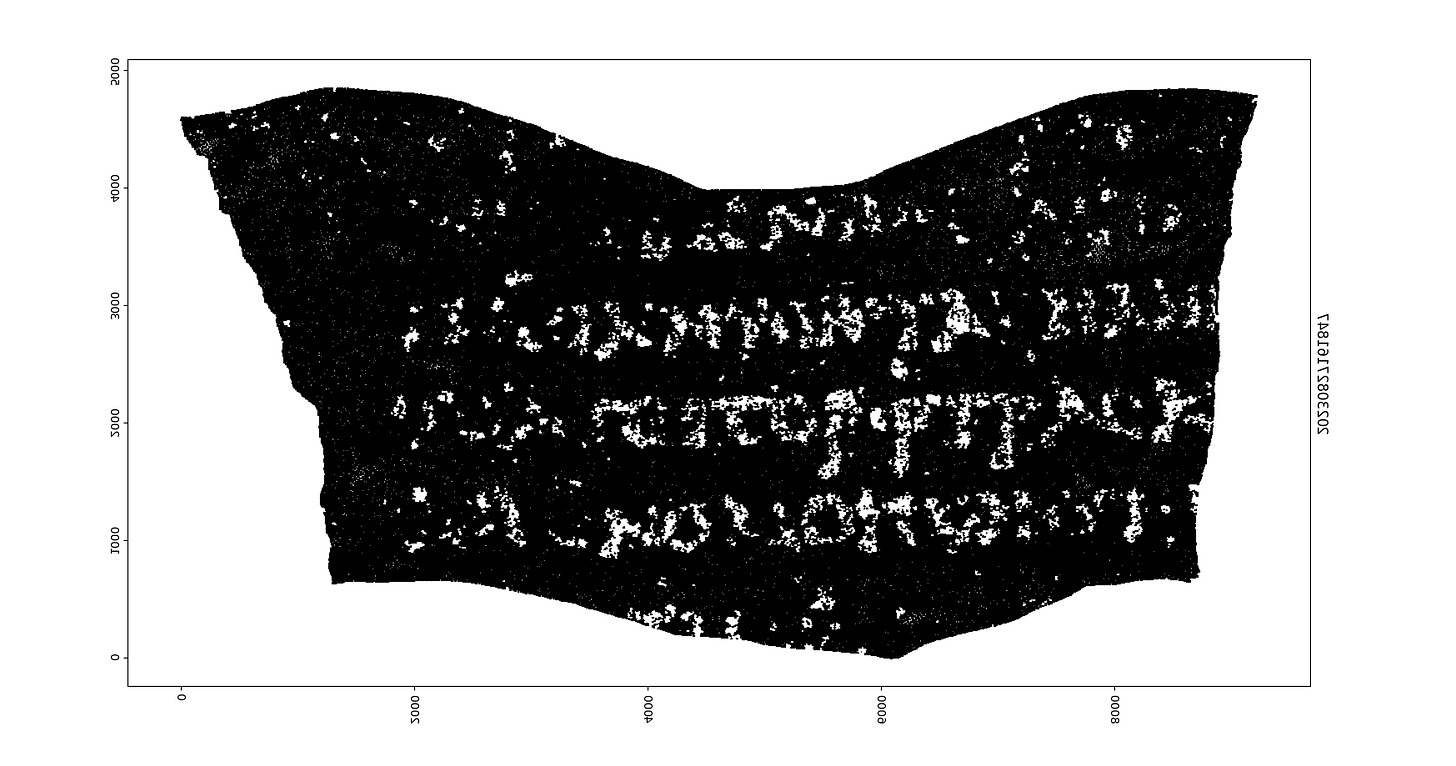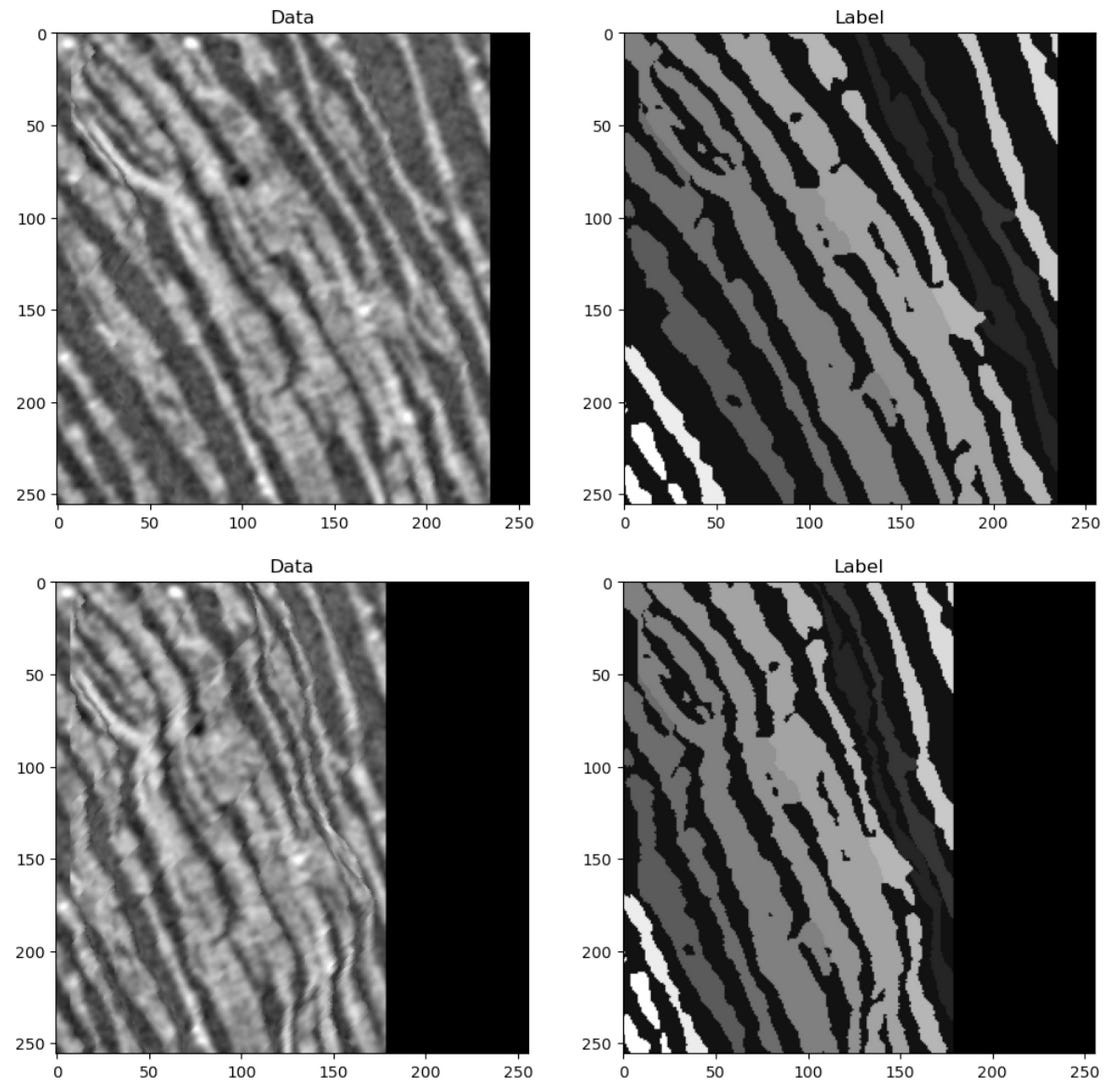June Progress Prizes; First Letters Prizes doubled
New volumetric segmentation labels + more updates
We’re awarding more exciting scroll tools made in June by our community! Read on for the details.
Plus, don’t miss further updates below, including a doubling of the First Letters Prizes and some additional resources now available!
3 x $2,500 (Sestertius)
James Darby (@james_darby) developed extensions to the Python image viewer Napari that enable volumetric labeling for cubes of scroll data. This process is similar to one possible using 3D Slicer, but is being tailored to scroll data. Further discussion in Discord also includes links to tutorial videos. On top of the tool, James contributed some labeled cubes that were annotated using this approach. These have been added to our growing dataset of volumetric segmentation labels (see below).
Philip Allgaier (@spacegaier) continues adding segmentation functionality to Volume Cartographer! Recent updates include reading binary .ply mesh files, loading point clouds into VC for visualization, and using the point clouds as “magnets” during segmentation, reducing the user input required (Discord discussion).
Santiago Pelufo (@spelufo) has been working on a segmentation pipeline to refine the 2023 segmentation results. The pipeline uses superpixels to refine the accuracy of the existing segments, and then stitches pieces of the segments together using graph approaches similar but not identical to ThaumatoAnakalyptor. The writeup (linked above) is a must-read if you are interested in autosegmentation! The impact on ink detection remains to be seen, but appears promising based on the more uniform segmentations being generated.

5 x $1,000 (Papyrus)
Paul Geiger contributed a registration tool to help align two scans of the same object. This is helpful as we often scan the same scroll at multiple resolutions and energies, as we hone in on the ideal scan parameters for Herculaneum scrolls. We would be excited to see further extensions to this approach that are more performant and allow for deformable transforms!
Sean Johnson (@Bruniss) uploaded a 3D ink detection volume, generated using an approach similar to Ryan’s previous one, but with more aggressive masking of the labels in order to remove ink labels that were in air rather than on papyrus.
Huang Cheng Jiun (@pocper1) and Yao Hsiao (@Yao Hsiao) created Visual Volume, a web-based volumetric rendering tool for visualizing scroll data (live demo, discussion).
James Darby (@james_darby) implemented a data augmentation technique for volumetric segmentation labels: by generalizing seam carving to 3D, volumes and labels from regions with well-separated papyrus can be converted to “densified” versions that more resemble the compressed regions where segmentation is still a challenge.
James Darby (@james_darby) was busy - on top of the above contributions, he also provided another utility to chunk meshes into cubes such that they can be loaded and refined in Khartes!

Viewing a chunk of the 2023 Grand Prize region in Khartes.
First Letters Prizes doubled; criteria adjusted
After finding letters in the first scroll, we hoped it would be straightforward to apply the same methods to the next ones. Now that we’ve gotten to know the personalities of each of the other scrolls, we can see they have slight variations in the appearance of their papyrus fibers and sheet surfaces.
To more accurately reflect the challenge of finding the first letters in each of Scrolls 2, 3, and 4, we are doubling the First Letters Prizes to $60,000 each (with an additional $15,000 each available for second place).
Additionally, instead of requiring 25 letters in 10 sq. cm, the First Letters Prizes now require 10 letters in 4 sq. cm.
Start inspecting those surface volumes!!
New segmentation resources
Our dataset of volumetric segmentation labels is growing, and now has 30 cubes of size 256x256x256! The team is working now to make the labels congruent across adjacent cubes, and to generate some labeled cubes in regions with more compressed papyrus.
There are a number of new big meshes worth exploring: a single stitched mesh comprising the entire 2023 Grand Prize banner region, and a mesh (with lower accuracy) of the entire Scroll 3! See the linked discussion for more info.
Also from Scroll 3 via our segmentation team: some new segments generated using Volume Cartographer that just might contain those elusive first letters! One is large and appears to contain some crackle-like features, and the others correspond to regions of interest from volumetric ink detection. All could contain letters!
Next office hours
The Vesuvius Challenge team will be hosting another office hours next Wednesday, July 31! Check the announcements channel in Discord to weigh in with what times would work for you.
July Progress Prizes
The next progress prize submissions for July are already around the corner - if you’re working on something, make sure to submit by the end of the month!







